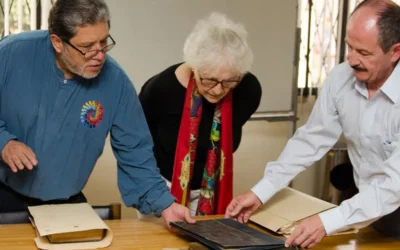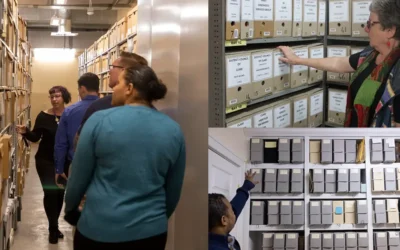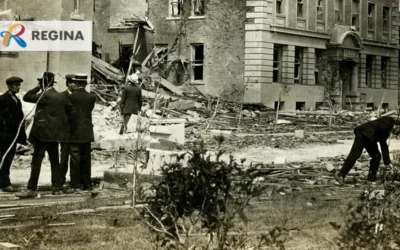How Does Archival Selection Shape History?
Margot Note
Collection development establishes policies and procedures used to select materials that the archival repository will acquire; it identifies the creators, subjects, formats, and other characteristics that influence the selection process.
Although theories of collection development originated from libraries, the concept is important for archives because it guides acquisitions and the scope of their collections. Archivists can apply collection development concepts from library science to the archives, especially examining the strengths of the collection, present collecting levels, identified weaknesses, and desired levels of collecting to meet program needs.
A Representative Historical Record
Collection development and accessioning is the starting point of all archival collections. The archival profession has advanced enough that archivists have transitioned from collecting everything to choosing what to collect, given the abundance of contemporary materials. Archival selection shapes history because diplomatic choices must be made to represent the historical record.
Collection policies seek to eliminate problems, lessen competition, and provide an avenue for deaccessioning. A repository acts unethically when a collecting policy is absent, or so vast that records cannot be processed promptly, effectively blocking them from research. Collection development practices ensure that a repository has a clear, distinct focus so resources can be invested in making records of enduring historical and cultural value available for use.
Most archives strive to have strong relationships with other area repositories whose collecting missions complement and coincide with their own. Archives staff should make referrals whenever possible if materials offered to their organizations do not fall within their collecting scope yet may be appropriate for these repositories. A collection development policy outlines the boundaries between what is collected and what is not to help guide these decisions.
For many archival repositories, scholarly research value is the primary criterion for collecting materials, but exhibit and educational value may also be considered. Collecting foci are usually based upon knowledge of researcher needs. They are guided by current strengths as well as areas where archivists see a need to build the collection. Condition, size, and conservation needs of the materials, as well as the organization’s ability to meet those needs, are also considered in collecting decisions.
The Archival Purpose
The purpose of collection development policies and procedures is to outline the scope and rationale behind collecting at the repository. It assists in furthering the institution’s mission and upholding the professional standards of the archival community. It also aids the archives staff and other key stakeholders in the selection of materials in a planned, realistic, and cohesive way, tied to the institution’s resources and priorities. Further, it informs the public of the repository’s selection priorities. It encourages the donation of materials that support its mission and goals. Repositories also recognize that their collecting efforts may change over time in response to a variety of factors. In response to this, they review their policies regularly to ensure that they are up-to-date and aligned with their mission.
Shapers of History
The use of the collection analysis methodology takes archivists away from their traditional role as custodians of the past. It moves them toward a more active one as shapers of the historical record. Even when archivists believed subjects were adequately covered, they discovered through collection analysis that they were not. Archives do not just happen of their own accord. Individuals and organizations create records and use them to support their values and missions, all of which comprise processes that are not politically and culturally neutral. Archivists decide to preserve them—or not—in similar partial ways.
Although it is daunting to think of archivists as shaping history, it is also a powerful statement. Rather than being custodians of information, archivists are actively examining their own materials as well as reaching out to donors to create more representative collections. They should ask themselves, “How am I shaping the history of my organization? Will I do it passively, or will I take leadership?”
Margot Note
Margot Note, archivist, consultant, and author is a regular blogger for Lucidea, provider of ArchivEra, archival collections management software for today’s challenges and tomorrow’s opportunities. Read more of Margot’s posts here.
Similar Posts
Navigating Selection in Archival Practice
The archival selection process is far from straightforward, given the limitations of long-term preservation and ongoing accessibility challenges.
Responsible Stewardship in Archival Practice
Responsible stewardship is a philosophy that guides the actions and decisions of archivists in safeguarding collective memory.
A Modern View of a City’s History via ArchivEra
Brief success story on City of Regina Archives’ use of ArchivEra to manage collections of legal, historical, administrative or financial significance
Stewards of the Past, Guardians of the Future
Archival preservation bridges the past and future, allowing the voices and stories of bygone eras to resonate with contemporary and future audiences.
Hosting service
Enjoy all of the benefits of your Lucidea solution with secure, reliable, stress free hosting
Programs & incentives
No matter your size or budget, we’ve got you covered, today and tomorrow




Leave a Comment
Comments are reviewed and must adhere to our comments policy.
0 Comments